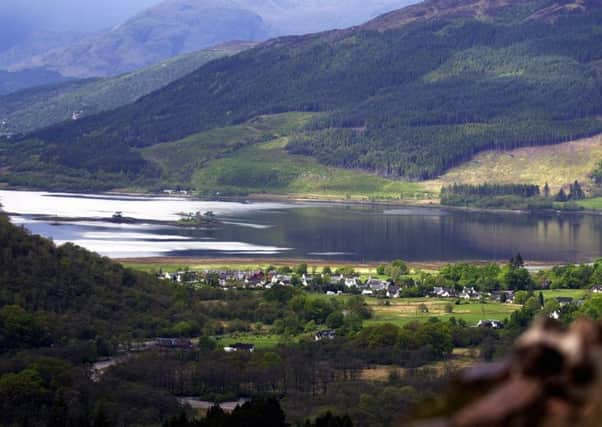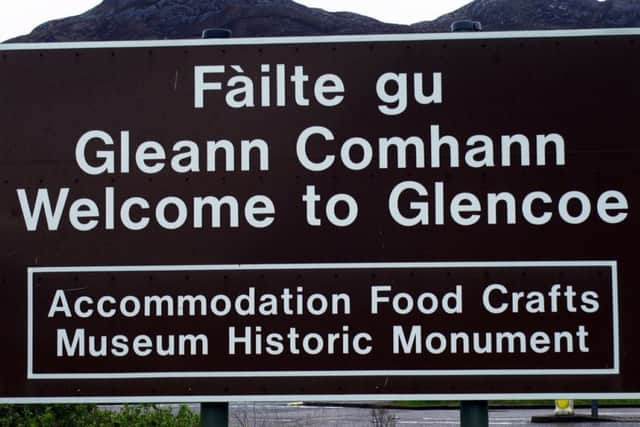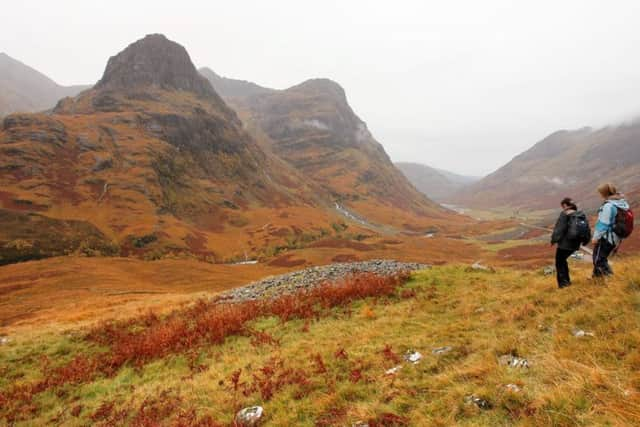Anger over plans to build power plant near site of Glencoe massacre


Glen Hydro submitted plans for a river hydro scheme on land near the site of the Glencoe massacre in Ballachulish.
Plans have been submitted to Highlands Council for a hydro scheme near the battle site - including a turbine house, intake, buried pipelines, outfall, and access tracks.
Advertisement
Hide AdAdvertisement
Hide AdThe proposed turbine location is less than 200 yards from the ruins of Inveriggin House - where nine members of the MacDonald clan were killed and the battleground for the bloody massacre by the River Coe.


The massacre of Glencoe has been described by historians as one of the darkest episodes in Scottish history.
The massacre on February 13, 1692 saw 38 members of the MacDonald clan of Glencoe murdered by Government troops led by Robert Campbell of Glenlyon.
The slaying followed a Jacobite uprising in the Highlands with many clans defying orders to pledge support to King William II.
The murders were carried out across the glen at MacDonald settlements after the clan chief failed to meet a deadline to state his allegiance to the King.


It came after a proclamation was issued in August 1691 which required the chiefs of the Scottish clans to take an oath of allegiance to William III before the end of the year.
Alasdair MacDonald of Glencoe, known as Maclain, missed the deadline by a few days, providing the authorities with an opportunity to crush his clan.
This opportunity was noticed by Scotland’s Secretary of State, John Dalrymple.
Advertisement
Hide AdAdvertisement
Hide AdHe had a particular dislike for the MacDonalds of Glencoe and Maclain’s failure to sign the oath on time gave him the perfect pretext for action.
The Secretary of State’s orders were explicit: the MacDonalds were to be slaughtered - ‘cut off root and branch’.
In preparation for the killings, Robert Campbell of Glenlyon’s soliders then arrived at Glencoe 12 days before the massacre.
They claim they were friends who were seeking shelter due to the fact that their fort was full.
The MacDonalds honoured the Highland hospitality code and gave the soldiers quarter in their own houses.
They lived together with neither the clan nor the common Argyll soldiers knowing what would happen next.
On the night of February 12, a blizzard howled through Glencoe, giving whiteout conditions.
During that night, the troops led by Robert Campbell set about systematically killing everyone they could after receiving the signed orders.
Advertisement
Hide AdAdvertisement
Hide AdThirty-eight men lay dead the next morning, including the chief, MacIain.
Iain Thornber, the deputy Lord Lieutenant, said: “No archaeological or walk-over survey appears to have been undertaken where ground disturbance will take place.
“For a glen known across the world for the infamous and high profile historic massacre – part of which occurred within the boundary of the proposed development area, I find it both astonishing and appalling that the applicant [and] the developer imagined this to be unnecessary.
“For this reason alone the application should be rejected or referred to the Scottish Government and determined by way of a public enquiry.”
He claimed it would also lead to a loss of and disturbance to wildlife, including nationally rare wildcats, otters and pine martens.
Paulette Weir, who lives nearby at River Coe Lodge, said: “I think it is very important historically that the developers need to respect the area. It will also impact tourism and wildlife.”
Diarmid Hearns, head of policy at the National Trust for Scotland, said: “Since the 1930s, the National Trust for Scotland has campaigned for the balanced development of Glencoe, conserving its important historic character and natural beauty, while supporting access and appreciation of this important glen.
“We will be scrutinising the application, and its potential implications for our national heritage, and will respond accordingly to Highland Council.”
Advertisement
Hide AdAdvertisement
Hide AdA Scottish Natural Heritage (SNH) spokeswoman said: “The proposed development lies within the Ben Nevis and Glencoe National Scenic Area (NSA). However we are satisfied that the application as submitted will not have an adverse impact on the NSA and does not raise any issues in relation to our remit.”
Nick Forrest, senior project developer for vento ludens, said: “The location of the ruin at Inveriggan was a significant consideration in selecting the turbine house site, 150m away on the opposite side of the Inveriggan Burn.
“A house stood very close to the turbine house site until the mid-1970s, and the turbine house will be slightly further from the public footpath.
“The turbine house will not change the current setting of the Inveriggan ruin.
“While our hydro sites are designed as sensitively as the site allows, and the construction area is restored as closely as possible to its original state, it is understandable that some individuals will have concerns about the overall impacts.”
